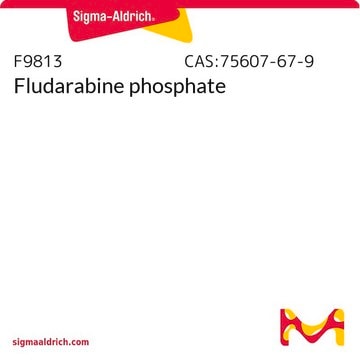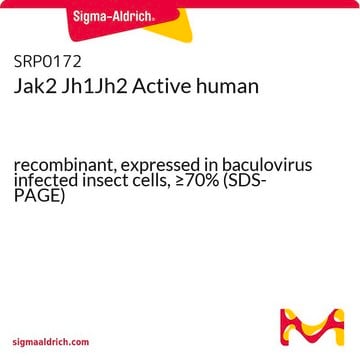추천 제품
생물학적 소스
mouse
결합
unconjugated
항체 형태
purified immunoglobulin
항체 생산 유형
primary antibodies
클론
HDAC1-21, monoclonal
형태
buffered aqueous solution
분자량
antigen ~65 kDa
종 반응성
mouse, human
농도
~2 mg/mL
기술
immunoprecipitation (IP): suitable
indirect ELISA: suitable
microarray: suitable
western blot: 2-4 μg/mL using total cell extracts of HeLa cells
동형
IgG3
UniProt 수납 번호
배송 상태
dry ice
저장 온도
−20°C
타겟 번역 후 변형
unmodified
유전자 정보
human ... HDAC1(3065)
mouse ... Hdac1(433759)
일반 설명
Anti-Histone Deacetylase 1 (HDAC1) antibody, Mouse monoclonal (mouse IgG3 isotype) is derived from the HDAC1-21 hybridoma produced by the fusion of mouse myeloma cells and splenocytes from BALB/c mice immunized with a synthetic peptide corresponding to amino acids of human and mouse histone deacetylase 1 (HDAC1).
Histone deacetylases (HDACs) are competing enzymes, belonging to histone deacetylase family. There are two classes of HDACs with six to seven different types of HDACs proteins. HDAC1,HDAC2 and HDAC3 belong to Class I HDACs and HDAC4, HDAC6, and HDAC7 belong to Class II HDACs. Class I HDACs consists of a single deacetylase domain at the N-termini and diversified C-terminal regions, while Class II contains a deacetylase domain at C-terminal position.
애플리케이션
Anti-Histone Deacetylase 1 (HDAC1) antibody, Mouse monoclonal has been used in:
- enzyme-linked immunosorbent assay (ELISA)
- immunoprecipitation
- immunoblotting
생화학적/생리학적 작용
HDAC1 is widely studied and is shown to actively modulate the eukaryotic chromatin structure. It deacetylyses lysine residues on core histones (H2A, H2B, H3 and H4) at the N-terminal. It is a vital component of cofactor complexes and is involved in transcription regulation. Histone deacetylation results in transcription repression leading to the formation of tight nucleosomal structure which prevents DNA accessing.
물리적 형태
solution in 0.01 M phosphate buffered saline, pH 7.4, containing 15 mM sodium azide.
면책조항
Unless otherwise stated in our catalog or other company documentation accompanying the product(s), our products are intended for research use only and are not to be used for any other purpose, which includes but is not limited to, unauthorized commercial uses, in vitro diagnostic uses, ex vivo or in vivo therapeutic uses or any type of consumption or application to humans or animals.
Not finding the right product?
Try our 제품 선택기 도구.
Storage Class Code
10 - Combustible liquids
시험 성적서(COA)
제품의 로트/배치 번호를 입력하여 시험 성적서(COA)을 검색하십시오. 로트 및 배치 번호는 제품 라벨에 있는 ‘로트’ 또는 ‘배치’라는 용어 뒤에서 찾을 수 있습니다.
Coactivators and corepressors of NF-kappaB in IkappaB alpha gene promoter
Gao Z, et al.
The Journal of biological chemistry, 280(22), 21091-21098 (2005)
Stem cell factor SALL4 represses the transcriptions of PTEN and SALL1 through an epigenetic repressor complex
Lu J, et al.
PLoS ONE, 4(5), e5577-e5577 (2009)
Sudhakar Ammanamanchi et al.
The Journal of biological chemistry, 278(37), 35775-35780 (2003-07-03)
Sp3 transcription factor can either activate or repress target gene expression. However, the molecular event that controls this dual function is unclear. We previously reported (Ammanamanchi, S., and Brattain, M. G. (2001) J. Biol. Chem. 276, 3348-3352) that unmodified Sp3
Engineering cell signaling using tunable CRISPR-Cpf1-based transcription factors
Liu Y, et al.
Nature Communications, 8(1), 2095-2095 (2017)
Jiayun Lu et al.
PloS one, 4(5), e5577-e5577 (2009-05-15)
The embryonic stem cell (ESC) factor, SALL4, plays an essential role in both development and leukemogenesis. It is a unique gene that is involved in self-renewal in ESC and leukemic stem cell (LSC). To understand the mechanism(s) of SALL4 function(s)
자사의 과학자팀은 생명 과학, 재료 과학, 화학 합성, 크로마토그래피, 분석 및 기타 많은 영역을 포함한 모든 과학 분야에 경험이 있습니다..
고객지원팀으로 연락바랍니다.








